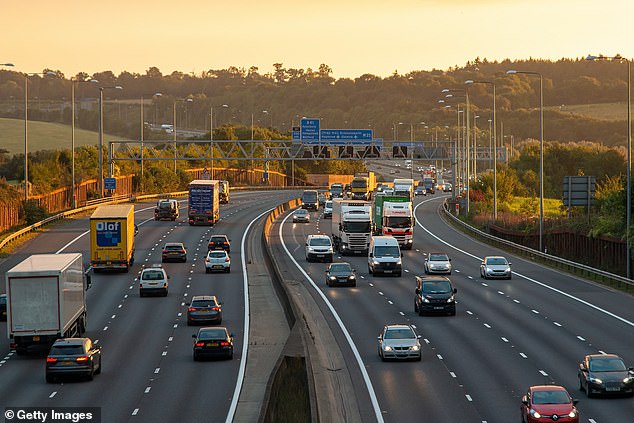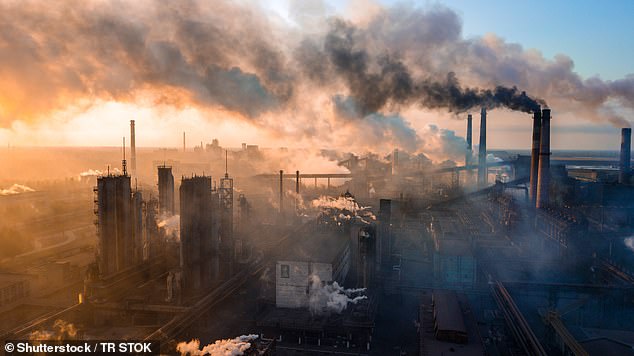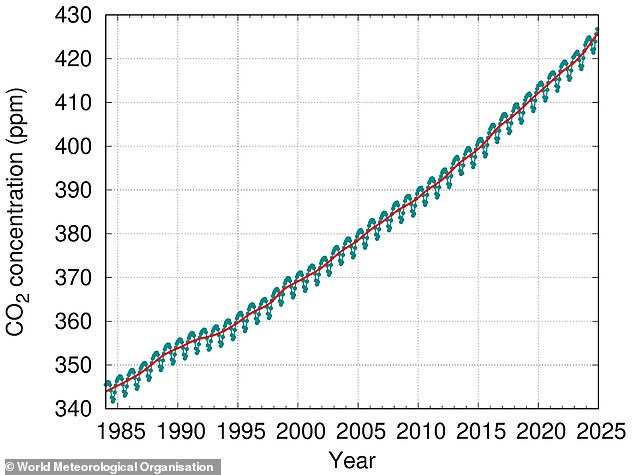Britain’s greenhouse gas emissions have nearly halved since 1990, official figures show.
Provisional data on emissions for 2024 show a 43.3 per cent decrease in the last 35 years, marking a huge reduction in the amount of harmful fumes being pumped into the atmosphere.
This includes carbon dioxide (CO2) which is released by burning fossil fuels and traps heat from sunlight, contributing to warming the planet.
The reduction also encompasses methane – a gas produced by the fossil fuel industry and by livestock – and nitrous oxide, which is release by synthetic fertilisers.
Other harmful gases that have been slashed are hydrofluorocarbons, primarily produced for refrigeration and air conditioning and which also have high global warming potential.
The figures, provided by the Office for National Statistics, are indicative of a shift away from coal and the expansion of renewable energy sources such as wind and solar.
Compared to 2023, the manufacturing sector saw the largest emissions decrease with a reduction of 7.4 per cent.
However transport emissions increased by 4.5 per cent – continuing a general rise that can mainly be attributed to the widespread use of cars.

This graph shows how UK greenhouse gas emissions have fallen by 43.3 per cent since 1990 when records began

Between 2023 and 2024 transport emissions increased by 4.5 per cent, the figures revealed. This could mainly be attributed to the widespread use of cars
Household emissions also rose for the first time since 2021, with the main contributor being the likes of gas–fired boilers, water heaters and stoves.
Other industries that recorded a rise in greenhouse gas emissions since 2023 include construction, accommodation and food services, financial and insurance activities and education.
Diane Crowe, Group Sustainability Director at Reconomy, the international circular economy specialist, said: ‘Today’s figures show steady progress on business emissions, particularly within manufacturing, but the rise in household emissions is a reminder that consumption remains a challenge.
‘The UK economy continues to operate in a largely linear way – extracting new materials to meet demand, with too little emphasis on reuse, recycling and resource efficiency.
‘This circularity gap is placing unsustainable pressure on the earth’s ecosystems, with the extraction and processing of materials alone responsible for around half of global greenhouse gas emissions.
‘Closing this gap and reducing material consumption are therefore critical to tackling the interconnected challenges of climate change, nature loss and pollution.’
On the whole, global greenhouse gas emissions continue to rise, with a new record set in 2023. The likes of China, the US and India are among the largest contributors to emissions.
The World Meteorological Organization has warned that carbon dioxide is accumulating in the atmosphere faster than any time experienced during human existence.

From 2023 to 2024, the global average concentration of CO2 surged by 3.5 parts per million (ppm) – the largest increase since modern measurements started in 1957 (stock image)

Global carbon dioxide (CO2) levels in the atmosphere hit a record high in 2024, a report by the World Meteorological Organisation (WMO) recently revealed
From 1990 to 2023 radiative forcing – the warming effect on our climate – by long–lived greenhouse gases increased by 51.5 per cent, with carbon dioxide accounting for the majority of this rise, according to the National Oceanic and Atmospheric Administration.
‘As long as emissions continue, greenhouse gases will continue accumulating in the atmosphere leading to global temperature rise,’ the WMO previously said.
‘Given the extremely long life of CO2 in the atmosphere, the temperature level already observed will persist for several decades even if emissions are rapidly reduced to net zero.
‘The last time the Earth experienced a comparable concentration of CO2 was 3–5 million years ago, when the temperature was 2–3°C warmer and sea level was 10–20 meters higher than now.’
